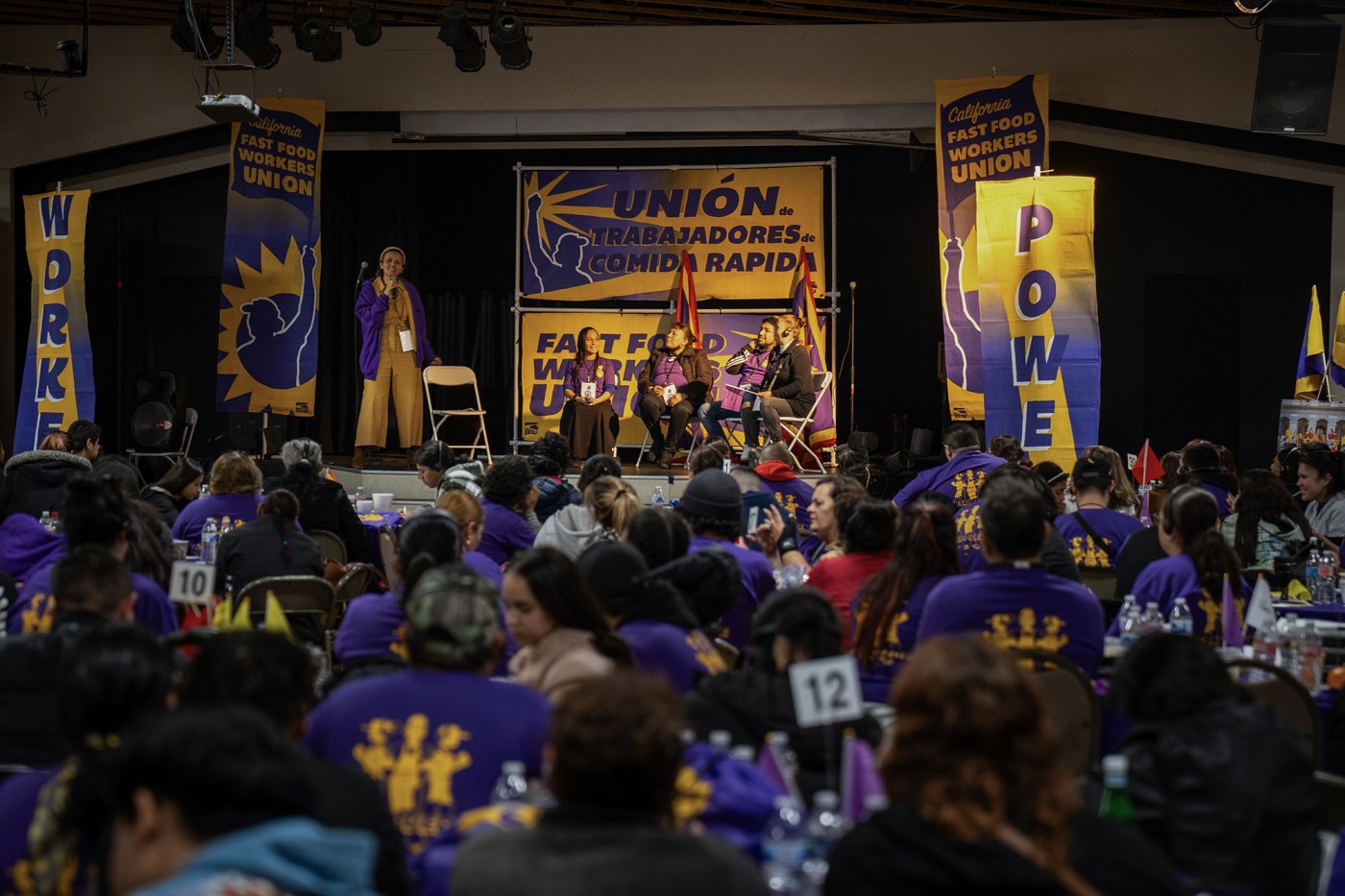By Jeanne Kuang | CalMatters
California touted a victory for working people in 2016 when it enacted a sweeping series of minimum hikes, making sure the lowest-wage workers would earn at least $15 an hour by 2022.
Then-Gov. Jerry Brown, while signing the law, spoke of “giving people their due;” then-Senate leader Kevin de León spoke in Spanish of making it possible to achieve the American dream.
Related Articles
Richmond kills refinery tax ballot measure in exchange for $550 million from Chevron
San Jose mayor forms committee supporting passage of Prop 36
Richmond refinery tax could be pulled from November election in exchange for $550 million from Chevron
$20 billion Bay Area housing bond pulled from the November ballot
Lawsuit: Opponents of $20 billion regional affordable housing bond say language is biased
Now, California voters are being asked to boost the statewide minimum wage again, just two years after the landmark $15 wage championed by unions and embraced by Democratic politicians nationwide took effect.
But when Proposition 32 — the measure to raise the minimum wage to $18 next year — was confirmed for Californians’ ballots in November, it wasn’t with the same fanfare.
That’s because a lot has changed:
—The current law came with boosts tied to inflation, which has pulled the statewide minimum wage steadily up to $16 this year — and which will bump it up to $16.50 in January.
—The skyrocketing cost of living has prompted local officials in more than two dozen cities to enact their own, faster-growing minimum wages since 2016. Now, 40 cities and counties have a higher minimum wage than the state. Most are in the Bay Area or Los Angeles County, covering an estimated one-third of California’s low-wage workers. Several are already above $18, or just one inflationary bump away.
—Unions in California took a different approach. They’ve won industry-specific wage floors for fast food, health care and, in some cities, hotels that are well above the statewide minimum. Fast food workers, who got a raise to a minimum of $20 in April, are seeking an inflationary bump for next year. In Los Angeles, hotel and airport workers are demanding a $25 minimum wage and a raise to $30 in time for the 2028 Olympics.
—Many low-wage workers received more amid a tight labor market during the pandemic, marking the first economic recovery in two decades in which they got raises faster than higher-wage workers.
This year in the Legislature, business and labor groups focused on other fights, and it was uncertain whether the measure would even stay on the ballot. Some proponents argued it wasn’t nearly ambitious enough to help the working poor afford California, where MIT researchers estimate the average single, childless adult needs $27 an hour to be “self-sufficient.”
One of them, the workers’ advocacy group One Fair Wage, asked the sponsor to pull it from the ballot in favor of advocating for a $20 wage; the organization’s president, Saru Jayaraman, now says Prop. 32 is needed but only a “first step.”
And though the sponsor, investor-turned-anti-poverty advocate Joe Sanberg, said he believes the measure will make a difference in workers’ lives, even he openly agrees $18 “is not enough.”
“In some ways, at the point where this measure is heading to the ballot, it’s kind of underwhelming,” said Chris Tilly, a UCLA professor of urban planning who studies labor markets.
Hotel workers and Unite Here Local 11 supporters sit-in during a protest at one of the main entrances to LAX airport, on June 22, 2023. Photo by Zaydee Sanchez for CalMatters
It’s not that workers, and their advocates, are uninterested.
The campaign estimates 2 million workers would still get a raise under the ballot measure — but that’s significantly fewer than the 4.8 million calculated by UC Berkeley economist Michael Reich in 2022, when the measure was first proposed and then delayed because Sanberg missed an administrative deadline. Under the measure the minimum wage would be $18 in January, with a delay until 2026 for employers with fewer than 26 workers.
Gustavo Miranda is one worker who would benefit. The 32-year-old Pomona resident makes $16.50 an hour sorting packages and loading trailers at an Inland Empire warehouse. Rent — $1,000 a month — swallows nearly 40% of his income, and he said grocery prices have risen. To make ends meet, he spends weekends refereeing youth sports. A raise, he said, would help him with car payments and sending money to support his daughter.
Proponents are banking on that simple message to convince voters. “From the standpoint of people who are going to be voting, the question is very clear,” Sanberg said.
After Sanberg poured more than $10 million into gathering signatures for the measure in 2022, the proponents have hardly spent anything. They don’t have a campaign account after Sanberg shut it down earlier this year.
But organizers including Ada Briceño, co-president of the Southern California hotel workers’ union UNITE HERE Local 11, say the measure is naturally popular and could turn out votes for other races.
The most powerful proponent, the California Labor Federation, which represents 2.3 million union members, isn’t yet sure how much effort it’s going to put toward passing the measure. While the federation was not involved in qualifying the measure, it endorsed it in July and plans to include it on other statewide campaign materials.
“I just don’t know how much opposition there will be, quite honestly,” said Labor Federation president Lorena Gonzalez.
Gonzalez sees the ballot measure as a “way to move things forward” at a time lawmakers are unlikely to take up the minimum wage. “When we jumped to $15 and did it legislatively, that was really profound,” she said.
But $18 today?
“Sure,” it makes a difference, she said, but “it’s not really a living wage.”
A cook dressed in a black outfit works in the kitchen of a restaurant, at the fryer. Another person, in the background, wearing denim and a white shirt, washes dishes.
Opposition is still organizing.
A legislative deal and a state Supreme Court ruling resolved what would have been the biggest ballot fights between business and labor — a law allowing workers to sue their bosses and a ballot initiative that would have asked voters to make it more difficult to raise taxes.
So business groups say they’re now turning their sights toward Prop. 32. Three major employers’ groups with deep pockets — the Chamber of Commerce, the California Grocers Association and the California Restaurant Association — are leading the opposition.
Chamber CEO Jennifer Barrera said employers will also focus on a simple message: the threat of price hikes.
“There is a heightened sensitivity to the impact of increasing these labor costs on businesses and what that ultimately does for the cost of living,” she said. “Our belief is that the cost of living is directly impacted when you raise these costs on businesses. There’s only so many places where they can make adjustments.”
Reich, of UC Berkeley, last fall published a study with other academics finding the ramp-up to a $15 minimum wage in California and New York had little effect on employment in fast food and among youth — and in the post-pandemic years that industry even added jobs.
But employers point to recent local minimum wage hikes as test cases — particularly the small, relatively wealthy community of West Hollywood, which last year set what was the nation’s highest wage floor of $19.08 and required generous paid sick leave. (This year, Emeryville surpassed that with an inflation-induced $19.36, in another display of cities leaving $18 in the rearview.)
West Hollywood officials this year commissioned surveys in which 42% of business owners said they laid off staff or cut workers’ hours, and city council members agreed to pause the next wage increase until January. Part of the city’s challenge was that business owners had to compete with employers just down the street in Los Angeles, where the minimum wage is $17.28, and Beverly Hills, which uses the state minimum of $16.
It may be too soon to tell the actual effects of the fast food increase, though proponents and opponents have both touted monthly jobs figures at convenient times. The latest seasonally adjusted federal employment numbers — recommended by experts because the restaurant workforce typically peaks in the summer and shrinks in the winter — show California fast food jobs have dipped since a high point in January, but remain close to last summer’s levels. Overall, the industry has about 20,000 more jobs than before the pandemic.












